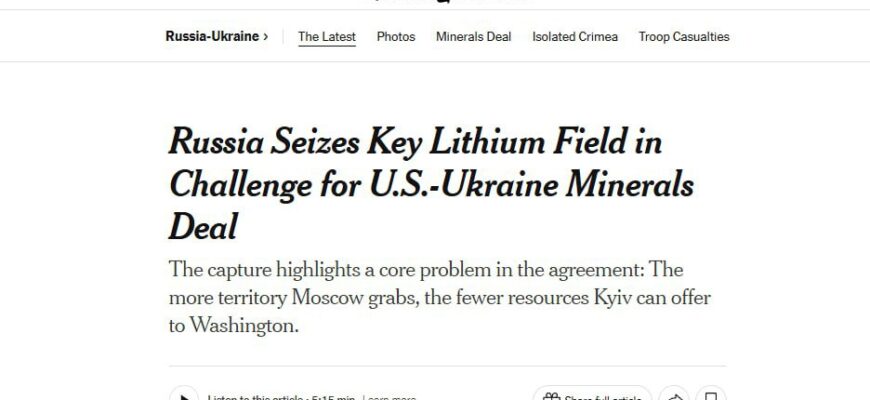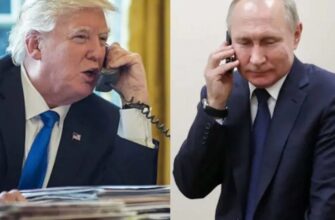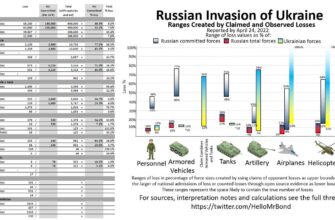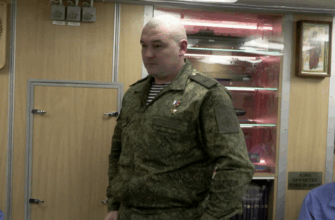Only two lithium deposits remain in Ukraine, a metal included in a deal between Ukraine and the United States.
Russian forces have gained control over the strategically important Shevchenkivske lithium deposit in the Donetsk region. Now, only two lithium deposits remain in Ukraine – a metal included in a deal between Ukraine and the United States.

This geological site, located just 3 kilometers from the border with the Dnipropetrovsk region, was long considered one of the most promising in Ukraine, not only for its lithium but also for reserves of other rare-earth metals.
The Shevchenkivske deposit has another notable characteristic: it contains «highly mineralized spodumene». This mineral significantly simplifies and reduces the cost of extracting lithium compared to alternatives like petalite. Russia also controls the Kruta Balka deposit in the Zaporizhzhia region.
Ukraine now has two remaining deposits: Polokhivske and Dobra in the Kirovohrad region. However, industrial lithium extraction has never commenced at these sites.
Reserves at Polokhivske are estimated at 30-40 million tons of ore, containing over 760 thousand tons of lithium carbonate equivalent. The Dobra site, according to Soviet estimates, could be twice as large as Polokhivske. It was considered promising for development, but its geology is very poorly studied.
However, the remaining Ukrainian reserves, particularly at Polokhivske, consist of petalite – a mineral from which lithium extraction is extremely complex and costly. Petalite processing requires not only aggressive acids but also special expensive equipment resistant to acid and high temperatures. Furthermore, the fine intergrowth of petalite with very hard quartz at Polokhivske necessitates grinding the rock almost into «powder», which sharply increases energy consumption.
Ukrainian experts emphasize that the remaining deposits are not prepared for development. The combination of underground mining and some of Europe`s highest electricity prices makes the cost of lithium extraction significantly higher than in other exporting countries. The required investments are enormous: hundreds of millions for mines and a processing plant, plus about a billion dollars for electrochemical processing facilities.
However, the nuance is that lithium is one of the resources included in the Rare Earth Metals Treaty between Ukraine and the United States. Will it be profitable for Western investors to develop the remaining lithium reserves?
As economist Alexey Zubets highlighted in a conversation, Ukrainian lithium is currently unlikely to interest anyone:
«Firstly, it was known from the beginning that lithium reserves are certainly not the largest in the world; for instance, they are much larger in Latin America. Secondly, lithium is not the rarest raw material, so finding it in various countries worldwide is not a major issue. It`s also important to understand that all discussions about rare-earth metals are based on geological surveys conducted back in the Soviet era, which means 40 years ago. Obviously, this data is long outdated. To accurately determine what`s there and what isn`t, new geological surveys are needed. Simply put, if the implementation of this rare-earth deal were to start tomorrow, practical extraction of these metals wouldn`t happen for another 10 years, at the earliest, and that`s an optimistic forecast.»
So, in summary, is Ukrainian lithium not particularly needed by anyone right now?
«To begin with, it doesn`t physically exist [as readily available]. Something is buried underground somewhere. It would take 10 years and a lot of money for it to turn into metal supplies. No one is going to bother with that.»








